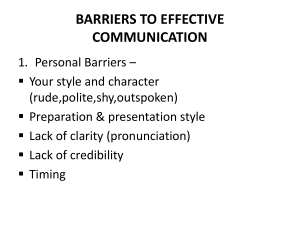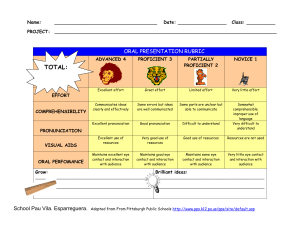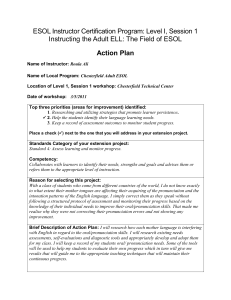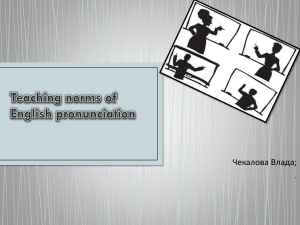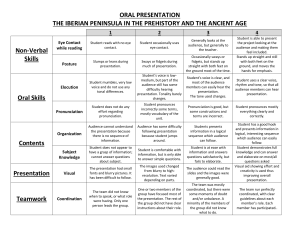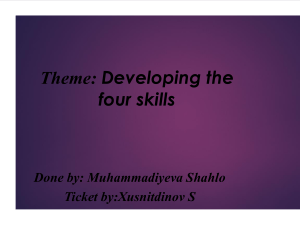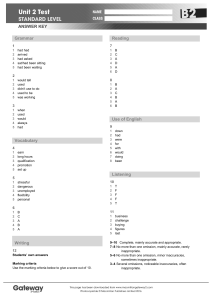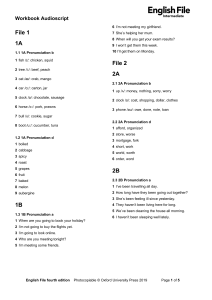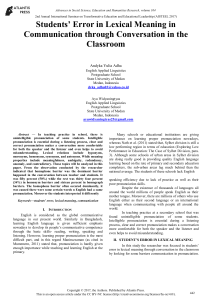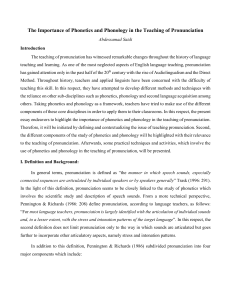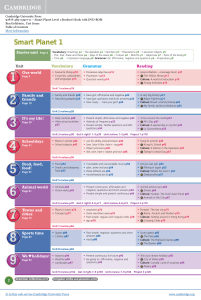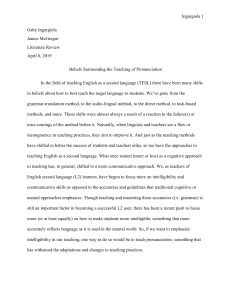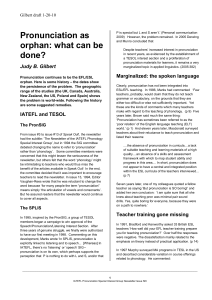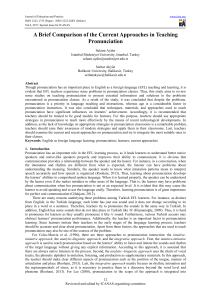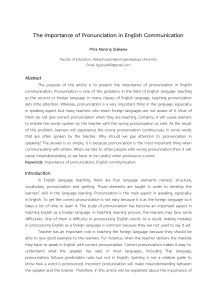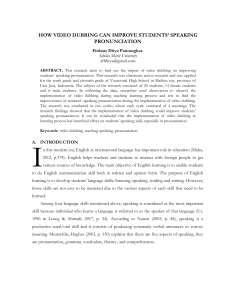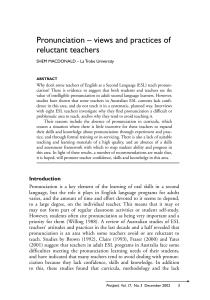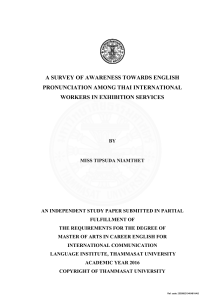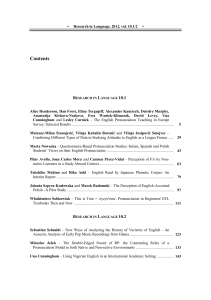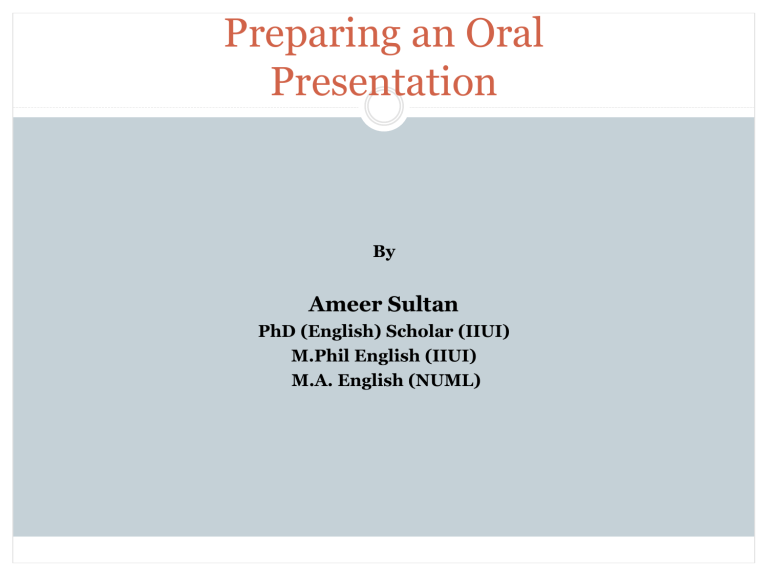
Preparing an Oral Presentation By Ameer Sultan PhD (English) Scholar (IIUI) M.Phil English (IIUI) M.A. English (NUML) Sequence of Presentation Initial Planning Organization Elements Structure Basic Rules Support Material Controlling your Audience Polish Conclusion Initial Planning • Determine the type of talk you’ll be giving. • Determine the audience composition, particularly the knowledge level. • Determine the length of time for the presentation. • What are your goals for this presentation? Organization • Start thinking about your topic as early as possible • Prepare background material – don’t assume your audience is familiar with the basic concepts of your topic • Traditional manuscript format (introduction, materials and methods, results, discussion, summary/conclusions) • Marketing modification (start with an overview or abstract) Elements • Focus on communication – Straightforward language – Avoid “busy” slides – Use fonts that are readable • Full sentences are unnecessary • Diagrams/images can be very effective Elements (continued) • Smooth transition between slides • Summarize the key points as your last slide • Repeat questions before answering them Pronunciation Correct pronunciation is important if one is to be understood correctly. Incorrect pronunciation is perhaps the first cause of communication breakdown. Few words fall in the category of more than one part of speech. Mr. Ahmed is our associate. They seldom associate with others We have complete record of it. Do you record phone messages? The divers found one metal object. They object to our leaving earlier. The Structure • Remember that this isn’t a conversation or written report. • Start with telling the audience what you plan on telling. them • List the goals of the presentation. • Summarize the content. • In essence, tell them what you’re going to tell them and then tell them Basic Rules Communicate your passion KISS – Keep It Short and Simple Use plain language Keep the focus on the information, not the razzle dazzle effects Avoid last-minute changes Rehearse the presentation and when you’re comfortable, rehearse some more Don’t memorize or rely heavily on notes It looks unconvincing Basic Rules (continued) Pace yourself Don’t race through, leaving the audience behind Don’t drag on, losing the audience’s attention Support Materials Your presentation may be clear and concise but don’t rely on it to make a lasting impression on your audience Provide additional documentation or handouts Provide a URL where the presentation can be found Controlling Your Audience Stand where you can be seen and where you can see the audience Observe the audience, making eye contact whenever Possible Try not to wander, fidget, or look down Handle questions politely and professionally Polish Use powerful words or phrases to make more of an impact Refer to the audience as “you” Humor can help hold an audience’s interest and make some points more memorable Quotations can be a powerful tool for making a point Thank your audience when you’re done Comfort, Stretch and Panic Zone Bibliography Brown Mike (2008) Comfort Zone: Model or metaphor? Australian Journal of Outdoor Education, 12(1). Hutchinson, T. & A. Waters. (1987). English for Specific Purposes: A learning-centered approach. Cambridge: CUP. Powel, Mark (1996). Presenting in English How to Give Successful Presentations. Boston: Thomson Heinle. Vilies, R,Price (1993). Modern Business English, California: Macmillan. Thank You



